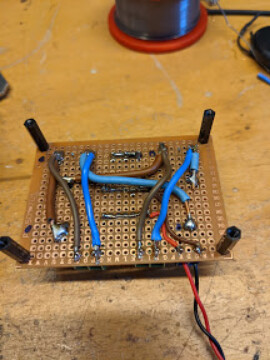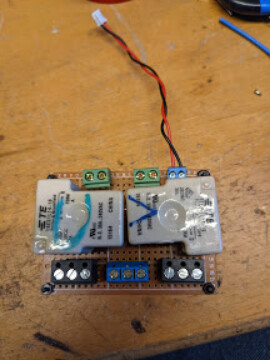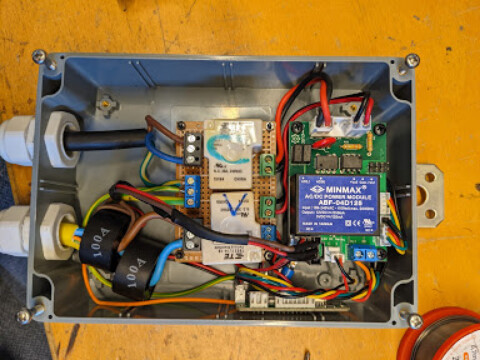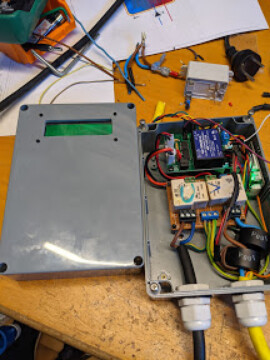This was SUPER HELPFUL, thank you so much for your follow up post saying how you’d fixed the problem.
I had the same thing happening, the EVSE blinking on and off every second or so like a turn signal indicator (I suspect that behaviour is what caused my PFC-30 charger in my Corbin Sparrow to fail, which blew up the 40 Amp relay in my EVSE.) The behavior was different trying to charge a Chevy Bolt - that seemed like it would start to charge, but the car would then say “Unable to Charge”.
The culprit turned out to be the disconnect button switch in the handle. When the button is released, the microswitch should close, and there should be around 0 Ohms between Common and NC on the switch (there’s a couple of resistors in the handle wiring and in the socket, so the prox pin can determine if the handle’s plugged in or not, and if the button’s pressed or not, by reading one of four different resistances from Prox to Ground.) On my unit, the switch was showing several hundred ohms instead of zero due to contact corrosion - the design of the switch contacts in the handle requires a certain amount of current to flow through it in order to clean the contacts, and the sensing circuit in the car doesn’t send that much current through the contacts, so eventually the switch will get oxide buildup on the contact buttons. This one took about ten years.
As I worked on the switch, the timing of the blinking changed - I think the timing is actually a side-effect caused this way:
Plug in the J1772 and release the button on the handle.
Car looks at the button, sees the circuit voltage at just barely under the cutoff line, and decides the button’s released.
Car engages the charging circuit and pulls in the “I’m Charging, Don’t Move The Car” relay.
That action slightly changes the voltage within the AVC2 device that’s the car’s side of the EVSE control logic - now the voltage on the proximity line is just over the limit, and the AVC2 tells the EVSE board that the handle’s disconnected, and releases the relay.
This action slightly changes the voltage with in the AVC2 device, now the voltage on the proximity line is just under the limit, and the AVC2 tells the EVSE to start charging again, and closes its local relay again.
Repeat until somebody notices and disconnects the handle.
The switch on my Chinese made J1772 cord seems to be a standard KW11-14 mini switch, I’ve got some on order via ebay. Meanwhile I pried this one apart and cleaned up the contacts somewhat - I now get close to 0 Ohms across the switch when the button’s released, which will get me through until the new switches arrive. Works properly on the AVC2 feeding the repaired Manzanita PFC-30, and works properly on the Chevy Bolt.
Hope this helps the next person!








